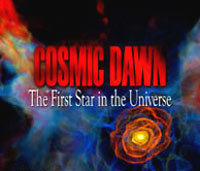

Tuesday - April 29, 2008
SLAC Today is available online at:
http://today.slac.stanford.edu
In this issue:
SLAC Public Lecture on the First Star in the Universe
Safety Today: NIH Offers Health Vodcasts
Regulations for Making International Shipments
 |
 |
|
Tuesday - April 29, 2008 |
SLAC Public Lecture on the First Star in the Universe
Image courtesy of SLAC InfoMedia.
In tonight's public lecture, the Kavli Institute for Particle Astrophysics and Cosmology's Tom Abel will use the latest computer animations of early star formation, supernovae explosions, and the buildup of the first galaxies to take you on a fascinating journey through the early universe. The lecture takes place at 7:30 p.m. in the Panofsky Auditorium. All are invited to attend. Learn more... |
||
|
|
||

National Institute of Health Offers VodcastsWant to see and hear about the latest research that can affect your health? The National Institute of Health (NIH) now offers weekly radio shows and podcasts. Or watch i on NIH, the new monthly half-hour video podcast—or vodcast—that brings you the latest news about medical research. To find these, check out the new Multimedia Gallery on the NIH website. This month's vodcast features the 2008 Red Dress Fashion Show, an update on alcohol abuse and alcoholism, and an i-to-Eye interview with the National Library of Medicine's Julia Royall about an innovative African malaria tutorial. A new 30-minute vodcast will appear on the NIH's website each month. Each episode seeks to inform viewers about health research topics important to individuals and the nation. |
Regulations for Making International Shipments
"Even though none of SLAC's work is classified because of the principle of openness in research, it's required that we follow Federal laws and regulations about exporting materials to other countries," said User Support and Records Manager Pamela Elliott. In order to allow adequate time for the User Support group to properly classify and screen shipments, all SLAC employees and users are advised to allow 48 hours from submitting their shipper to final approval by User Support. "More complicated shipments may require more time for screening, but we strive to keep the turn-around time as close to 48 hours as possible," Elliott said. User Support encourages the SLAC community to call for more information regarding this process. Pamela Elliott and User Support can be reached at x4342. |
Events
Access (see all)Announcements
|
| | ||
|
|
||
 <%
Response.AddHeader "Last-modified", getArticleDate()
'Response.AddHeader "Last-modified","Mon, 01 Sep 1997 01:03:33 GMT"
'Monday, December 06, 2010
%>
<%
Response.AddHeader "Last-modified", getArticleDate()
'Response.AddHeader "Last-modified","Mon, 01 Sep 1997 01:03:33 GMT"
'Monday, December 06, 2010
%>View online at http://today.slac.stanford.edu/ |
||